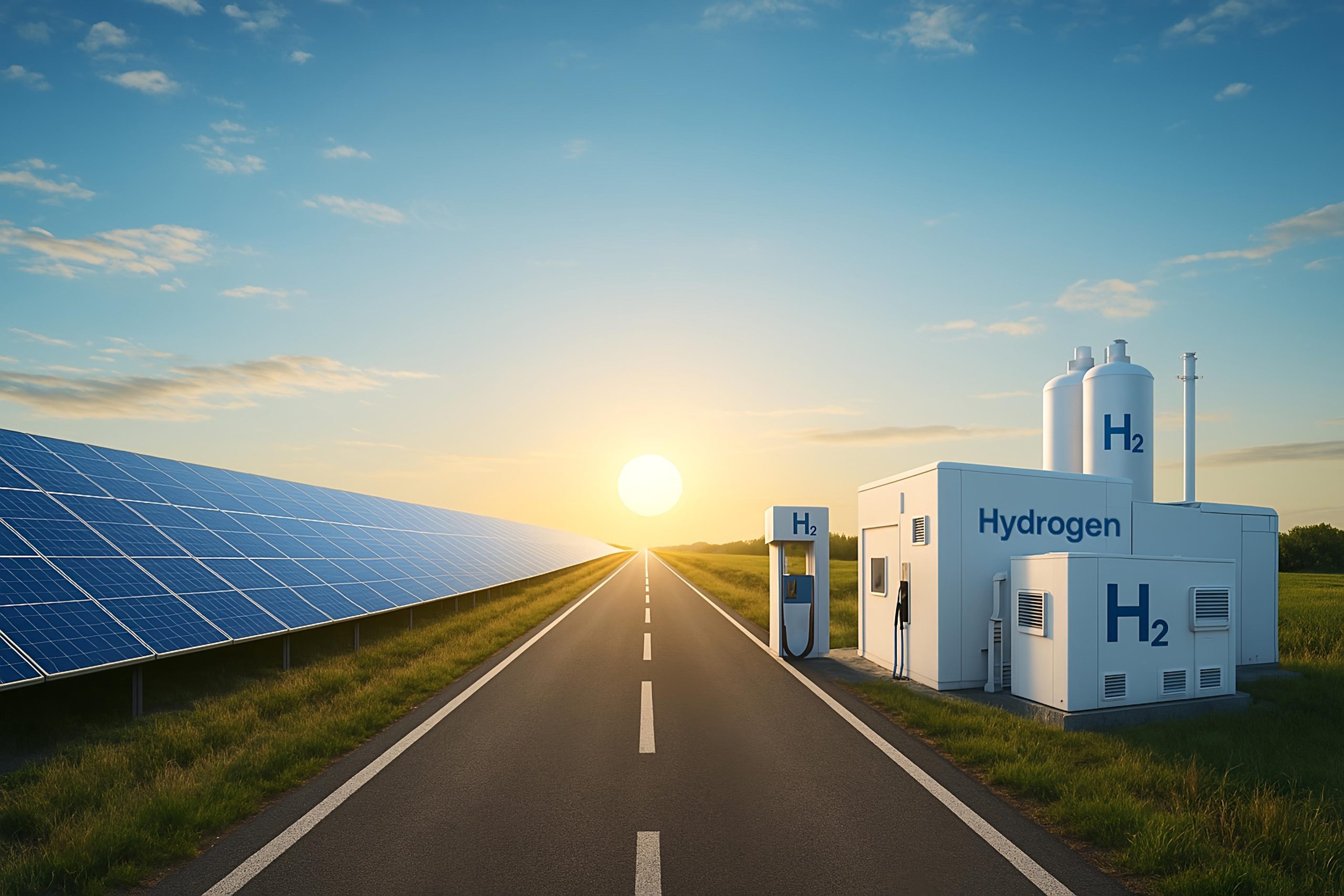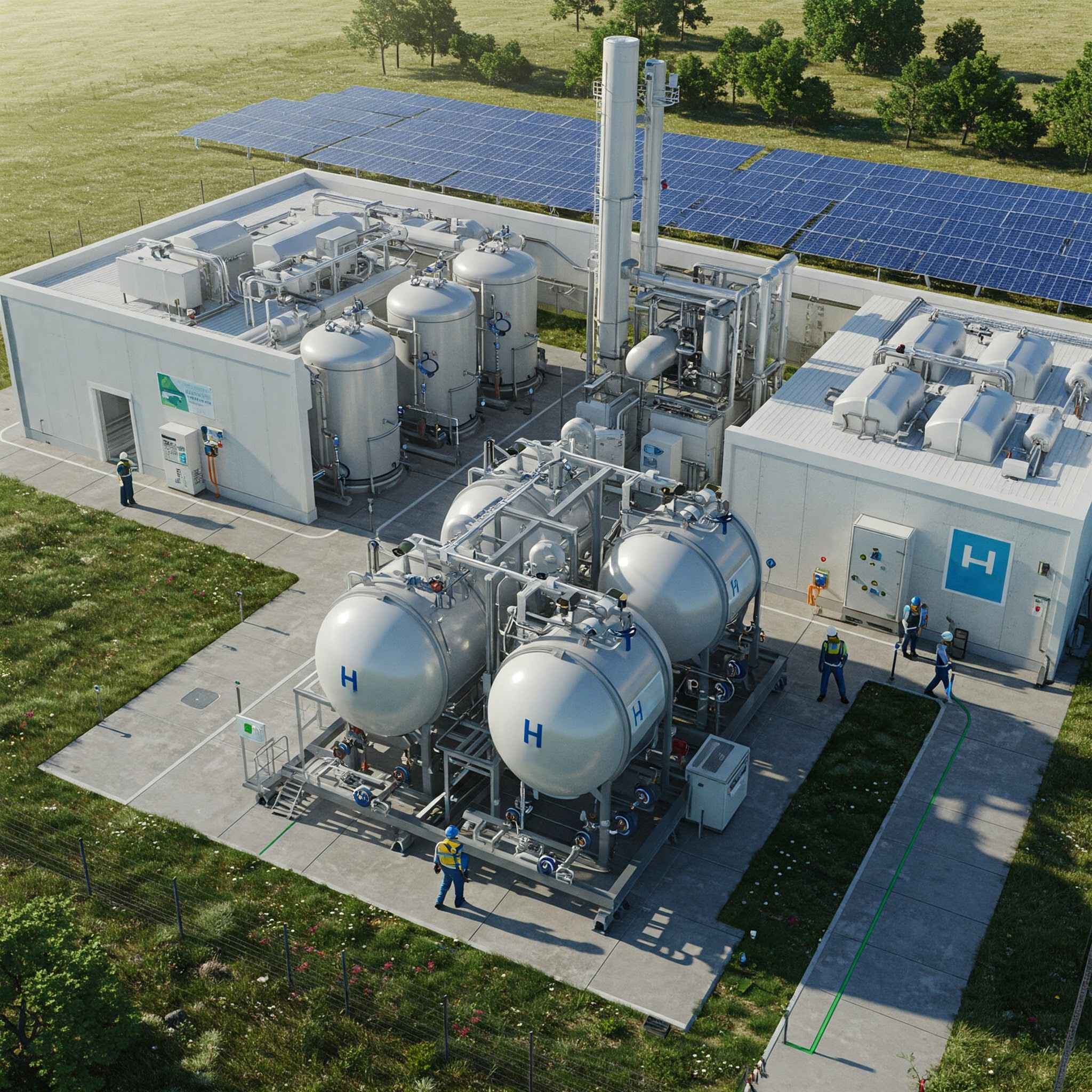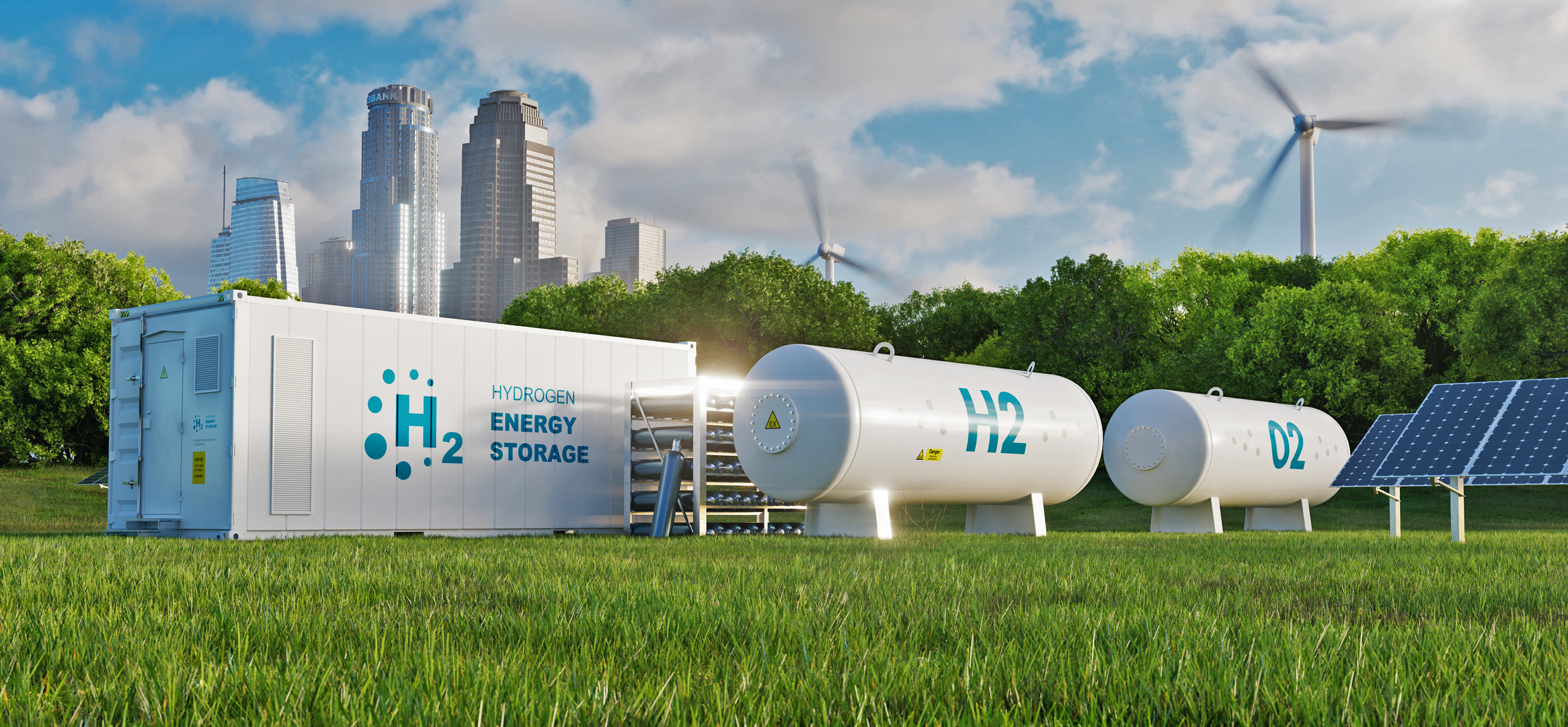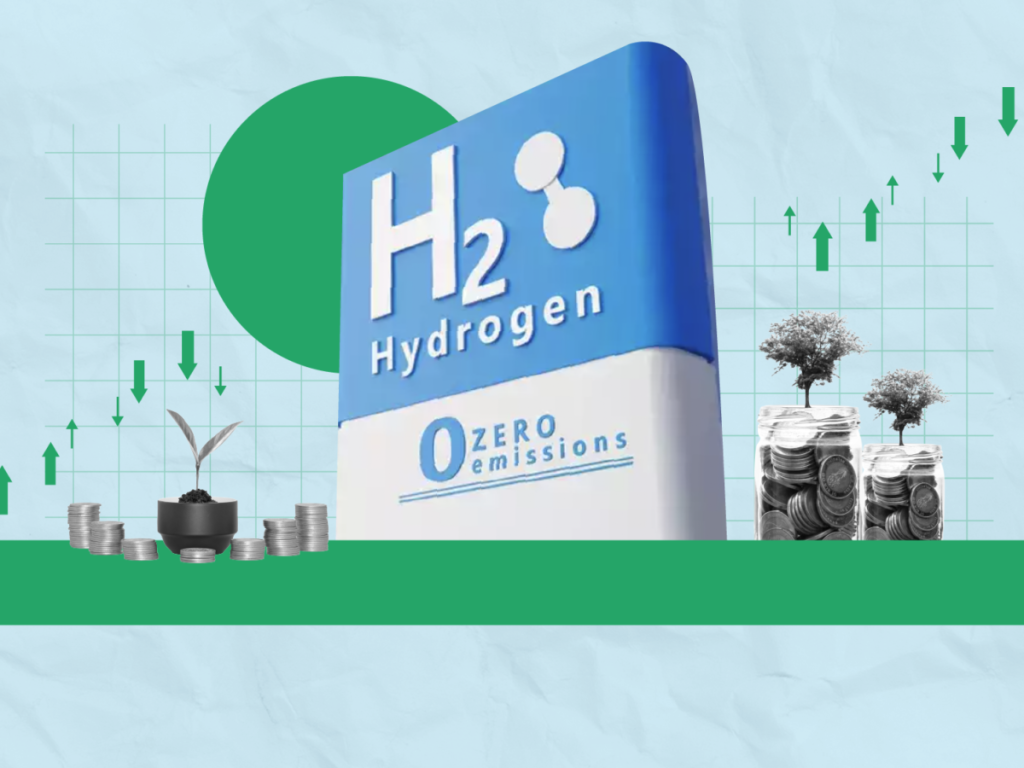The global effort to combat climate change has become a race against time. While solar energy, once a niche sector, has emerged as a mainstream energy solution, it took over a decade of sustained effort, investment, and technological advancement to get there. With global warming accelerating, we no longer have the luxury of time for green hydrogen to follow the same timeline.
Green hydrogen, often hailed as the “fuel of the future,” could play a pivotal role in achieving global decarbonisation goals. Yet, as other countries and companies surge ahead in renewable energy deployment, delay in tapping the green hydrogen potential would mean falling behind both environmentally and economically. Global emissions must be cut in half by 2030 to align with a 1.5°C pathway, according to the UNEP Emissions Gap Report 2023. Prioritising green hydrogen is no longer an option; it’s a necessity. (Source)
Two Key Challenges for the Green Hydrogen Industry
Despite its immense potential, green hydrogen faces two critical roadblocks—high costs and technological challenges. Drawing parallels with solar technology provides insight into these challenges while emphasising the need for urgent action.
- High Costs
Green hydrogen production is currently expensive due to the high costs of electrolysis and renewable energy sources required for production.
According to the International Renewable Energy Agency (IRENA), green hydrogen costs range between $3 and $8 per kilogram, whereas fossil-based hydrogen costs under $2. Solar energy had once faced similar challenges in the early 2000s, with photovoltaic (PV) cells costing over $3 per watt. (Source)
In recent times, thanks to scaling, technological innovation, and supportive policies, PV costs have dropped below $0.20 per watt. - Technological Challenges
Producing, storing, and distributing hydrogen requires innovative technological interventions. Unlike solar energy, where the technological value chain is relatively inherently simple, and has further simplified over the past several years of implementation, hydrogen requires advancements across its whole value chain, including electrolysers, storage systems, transportations solutions, (vessels, pipelines etc), advance metallurgy for storage & transportation, refinement of use cases like SAF and exploring new use cases. (Source)We cannot afford to wait another decade for green hydrogen to become competitive; acceleration is required. Solar energy surely took a while to become mainstream and get the momentum to get to where it is now. However, the urgency to scale cost reductions in hydrogen must match—or even exceed—the historical efforts made for solar energy.
- High Costs
Two Solutions to Accelerate Hydrogen Energy Adoption
To make hydrogen technology as mainstream as solar technology—but in half the time—scaling and technological advances must be prioritised.
- Scaling the Industry
Scaling production and infrastructure is crucial. Globally, ambitious targets have been announced in relation to green hydrogen production and electrolyser manufacturing capacities. India has set up an ambitious target of producing 5MMTPA of green hydrogen by year 2030. Countries like Japan and Germany have already made significant strides, with Japan targeting 3 million tons of hydrogen use annually by 2030 (Source). Building economies of scale will drive down costs, as seen in the solar industry. For example, through aggressive scaling, China achieved over 70% of the global PV manufacturing capacity, reducing costs globally. (Source)
Governments and private stakeholders must adopt similar scaling strategies for hydrogen energy by investing in large-scale production facilities and infrastructure. (Source)
- Scaling the Industry
Challenge remains, however, to balance public and private interest and investment to ensure that these announced targets are met in the given timelines.
- Technological Advances
Continued investment in R&D is critical to overcome the complexities of hydrogen technologies. NGHM announcements have been followed by the formation of empowered task forces to focus on different tenets of the mission. (Source)
The development of more efficient electrolysers and safe storage solutions, such as advanced solid-state materials, could revolutionise the industry. The United States Department of Energy’s Hydrogen Shot Initiative, which aims to reduce green hydrogen costs to $1/kg by 2030, is an example of how ambitious technological targets can spur innovation. (Source)
- Technological Advances
There are several technologies available with their own value proposition in specific applications. (Source). It is essential to balance investment in more efficient future ready technologies and the ones that are currently available on a commercial scale.
Supportive Policies: The Role of Government
Government intervention is crucial in establishing the foundation for a successful hydrogen energy sector. Lessons from India’s post-independence economic policies illustrate how strategic nationalisation and later liberalisation fueled industrial growth. Similarly, governments must act decisively to ensure hydrogen energy reaches critical momentum quickly.
- Aggregation of Demand and Central Agencies
At current level of prices and technological awareness, the demand is only from small pockets of early adapters that are often fragmented. It is not economically efficient to serve these demands for private producers. Governments can stimulate demand by creating markets for hydrogen in transportation, industry, and power generation. Central agencies should coordinate large-scale projects by aggregating demand ensuring efficiency and risk-sharing among stakeholders. (Source)
- Innovative contracting
Innovative contracting methods can be deployed to mitigate the cost challenges with hydrogen technology. Long term purchase agreements, carbon credit linked purchase models, Opex models will allow expediting final investment decision at a price point that allow availability of working capital with the producers and rationalise the total cost of ownership for the purchasers. - Tax Incentives
Tax incentives are the most efficient alternative to direct government funding. It allows the companies to converge to most promising solutions, establishing a suitable value chain of supply & demand. Tax breaks for hydrogen producers and subsidies for R&D projects can lower entry barriers and give the necessary push for private enterprises’ participation. (Source) - Funding
Hydrogen projects often entail high risks – often perceived risks, due to lack of understanding- and long gestation periods. Governments can mitigate these challenges by offering financial incentives to banks and other financing institutions to provide loans for hydrogen-related projects. Risk management mechanisms, such as government-backed insurance schemes, can further reduce uncertainties and attract private investment. Consistent communication from government assuring commitment to hydrogen is necessary to retain interests of funding agencies, especially international agencies to invest in long gestation projects in the country.
Countries like Australia have already committed $1.4 billion in funding to develop hydrogen hubs, serving as an example for others to follow. (Source) - Regulations
Robust regulations are essential to address safety, efficiency, and interoperability challenges in hydrogen energy. Governments must establish standards for hydrogen production, storage, and transport to ensure safety while encouraging innovation. There are also startup fundings that can enable a greater growth opportunity for the industry. (Source) Additionally, creating markets for hydrogen, through mechanisms like renewable energy certificates or hydrogen credits, can incentivise adoption and promote competition. - Global Collaboration
Mobilising global support is essential to fast-track hydrogen adoption. Hydrogen energy’s potential extends beyond borders, making international cooperation critical. Free trade agreements and specific bilateral agreements for focused technological and economic exchange could include hydrogen-specific chapters, encouraging technology transfer and financing. Initiatives like the Mission Innovation Hydrogen Valley Platform, which connects global hydrogen valleys, demonstrate how international cooperation can amplify results. (Source)
- Aggregation of Demand and Central Agencies
After independence, India nationalised key industries such as banking, insurance, and heavy manufacturing to ensure economic self-reliance, channel funds into critical sectors, and achieve minimum industrial momentum. However, inefficiencies in this model led to the economic reforms of 1991, which liberalised industries, encouraged private investment, and opened India’s markets globally. (Source)
For hydrogen energy, a similar strategy is essential but must be expedited. Initial government intervention—through infrastructure development, subsidies, and market creation—should establish momentum. Once stable, gradual liberalisation can enable private investment, innovation, and global competitiveness, ensuring rapid growth in response to the climate crisis.
Understanding the Differences Between Hydrogen and Solar Energy
While the solar and hydrogen industries share the goal of decarbonisation, their value chains, technological complexities, and public perceptions differ significantly:
- Value Chain: Solar energy relies on manufacturing PV cells and deploying them, while hydrogen demands a more intricate chain, including production, storage, transport, and end-use.
Additionally, hydrogen production methods like electrolysis are energy-intensive, requiring renewable power to ensure true sustainability. The infrastructure for hydrogen distribution, such as pipelines and fueling stations, is still in its infancy, adding further challenges.
- Value Chain: Solar energy relies on manufacturing PV cells and deploying them, while hydrogen demands a more intricate chain, including production, storage, transport, and end-use.
- Technological Complexity: Solar energy’s challenges were primarily cost-related, whereas hydrogen involves overcoming handling, storage, and distribution barriers amongst others.
Innovations in electrolyser efficiency and the development of durable materials for storage tanks are critical to progress. Furthermore, hydrogen’s role across sectors—from transportation to heavy industry—means that technological advances must cater to diverse applications simultaneously.
- Technological Complexity: Solar energy’s challenges were primarily cost-related, whereas hydrogen involves overcoming handling, storage, and distribution barriers amongst others.
- Public Perception: While solar energy is widely perceived as safe and sustainable, hydrogen faces misconceptions about its safety and viability, requiring robust education and awareness campaigns.
Clear communication about the differences between hydrogen’s risks and benefits is essential to gaining widespread acceptance. (Source)
- Public Perception: While solar energy is widely perceived as safe and sustainable, hydrogen faces misconceptions about its safety and viability, requiring robust education and awareness campaigns.
Prioritising Hydrogen Energy: The Time Is Now
Technology evolution and market creation is not a new phenomenon for Hydrogen. It is the standard organic formula for any new idea/concept/technology to establish its roots and become a way of life.
Making solar energy mainstream took over a decade, but we cannot afford the same timeline for hydrogen energy. The stakes are higher, the challenges more complex, and the clock is ticking. Urgent action is needed to support scaling, technological advancement, and policy support to ensure hydrogen energy becomes a cornerstone of our decarbonised future.
Learning from the lessons of the solar revolution and adapting them to hydrogen’s unique context, we can achieve faster, more impactful results. As the global fight against climate change intensifies, hydrogen energy must rise to the forefront—because waiting another decade is simply not an option.
















